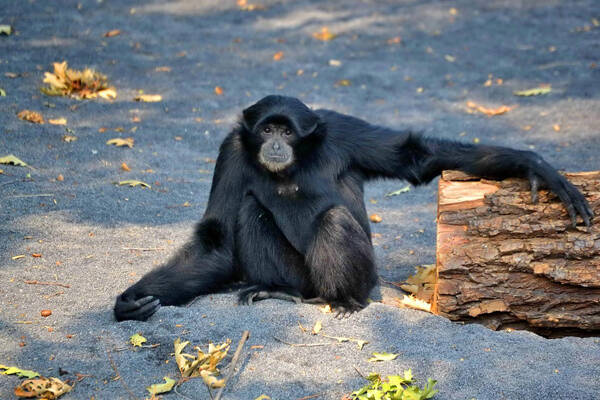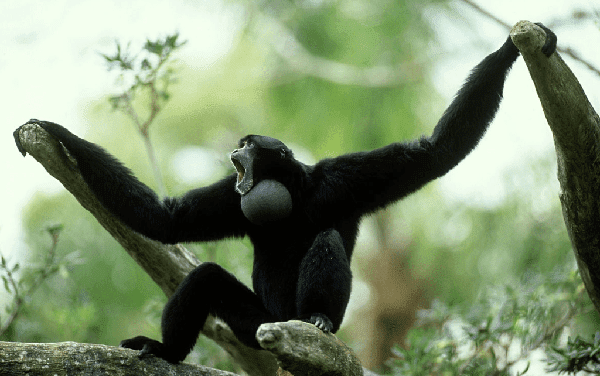Symphalangus syndactylus
IUCN
LCBasic Information
Scientific classification
- name:Symphalangus syndactylus
- Scientific Name:Symphalangus syndactylus,Siamang,Little monkey
- Outline:Primates
- Family:G.family symmandude
Vital signs
- length:70-90cm
- Weight:10-16kg
- lifetime:About 30 years
Feature
The largest gibbon
Distribution and Habitat
Distributed in Sumatra, Malaysia and Indonesia.
Siamangs live in tropical rainforests and subtropical monsoon forests, and are arboreal. They mainly live in primary and secondary tropical rainforests, with a vertical altitude of 305-1220 meters. The area where they live is rich in fig trees, which is one of the main sources of food for them.
Appearance
The siamang is the largest gibbon, with a maximum height of 1 meter, a body length of 70-90 cm, arms spread to 180 cm, and a weight of 10-16 kg. The body hair is long, soft and fluffy, all black, the face is bare, there is a little white hair near the mouth, and the eyebrows are reddish brown. The ears are small, the nose is flat, and the nostrils are large. The male has a tuft of upright hair on the head, and there is also a clear tuft of black penis hair, the length of the hair is about 15 cm.
There are two other obvious characteristics that distinguish the siamang from other apes: one is that the vocal sac in the throat is bare, round and large, gray or pink, and bulges like a ball when calling; the other is that the second and third toes are webbed, so that the two toes are permanently connected together, even to the end of the joint.
Details
Symphalangus syndactylus (scientific name: Symphalangus syndactylus) is called Siamang in foreign language, and has no subspecies.

Symphalangus syndactylus is a diurnal animal that likes to live in small groups as a family unit. It is a monogamous primate, usually consisting of 5 individuals in a group, including an adult male and an adult female, and the rest are semi-adult and young gibbons, with a maximum of 3 offspring. The adult male ape serves as the leader. Gibbons have a relatively long maturity period, and their family relationships are not only stable, but also harmonious and friendly. The members of the family are generally very harmonious, caring for each other and defending together. The territory of a family group is 15 to 35 hectares.
The main food of the siamang is fruit and leaves, and it also eats insects and flowers. In the siamang diet, fruits account for 20% to 50%, especially figs; young leaves account for about 40% to 65%. The actual proportion varies from year to year.

The reproduction rate of Siamang monkeys is very slow, with one baby every two years. Males and females mainly mate in winter and spring. They first approach each other, and their calls become louder, longer and more melodious. After multiple attempts at contact, they become mates and mate. The gestation period of females is about 230 days. After mating and conception, they still move with the group. After 3-4 months, their abdomens bulge slightly. As the fetus grows, their abdomens gradually expand. They also become more cautious in their daily activities, but they still stay with the group until giving birth. Birth usually occurs in autumn and early winter. Each litter only produces one cub. The cub weighs about 300 grams at birth and is mostly grayish yellow. It gradually turns black or brownish black after 4-5 months of age, and turns black all over after half a year. The cubs can live on their own at the age of 2, but they still do not leave the group until they are about 6 years old and close to sexual maturity. They slowly leave the group and reach sexual maturity at the age of 8-9. They live independently and look for mates.
Listed on the 2008 IUCN Red List of Threatened Species, ver 3.1 - Endangered (EN).
Listed in the CITES Appendix I protected animals of the Washington Convention.
Protect wild animals and eliminate game.
Maintaining ecological balance is everyone's responsibility!








